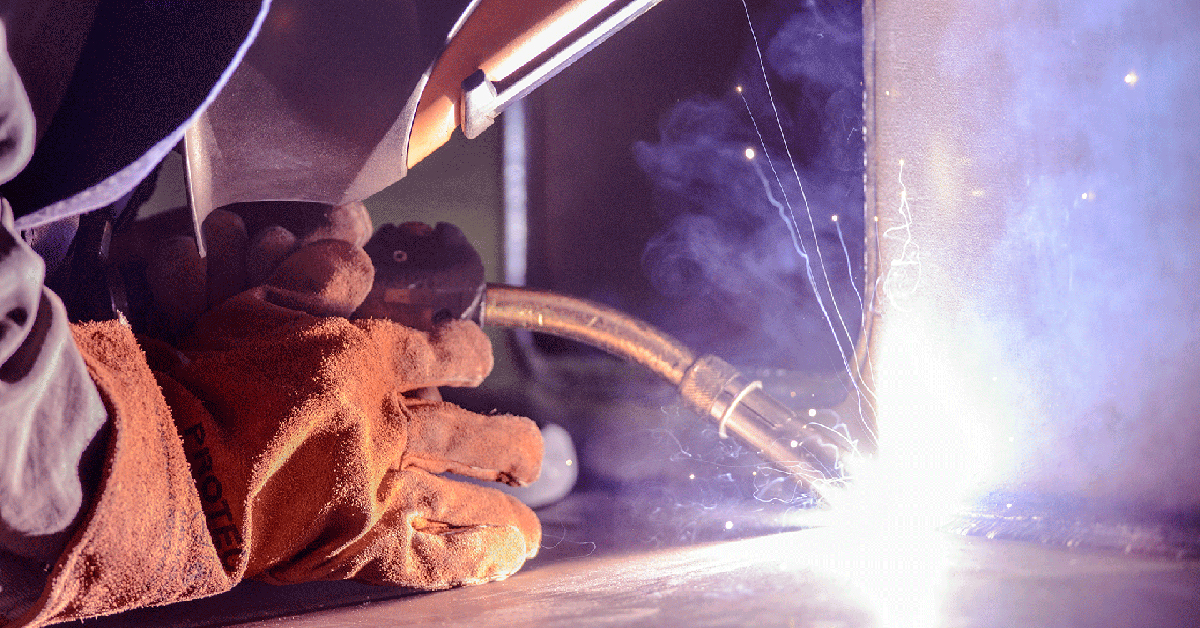Necessary Tips for Welders: Preventing Undercut Welding and Ensuring Stronger Weld Joints
In the world of welding, accomplishing sturdy and solid weld joints is the keystone of generating high-quality job. One usual obstacle that welders usually run into is undercut welding, which can endanger the stability of the weld joint.

Comprehending Undercut Welding
Undercut welding is a common welding flaw that occurs when the weld steel fails to effectively fill up the groove and results in a groove-like anxiety along the weld bead. This flaw weakens the weld joint, making it prone to cracking and failing under anxiety. Undercutting can be triggered by numerous elements, consisting of excessive welding existing, high welding speed, inappropriate electrode angle, incorrect electrode size, and inadequate welding technique.
One of the major factors for undercut welding is an imbalance between the welding existing and the welding speed. If the welding current is expensive or the welding rate is too fast, the weld steel may not adequately fill up the groove, bring about damaging. Additionally, utilizing an electrode that is also big can cause a similar outcome, as the excess metal can not effectively move into the groove.
To avoid undercut welding, welders ought to guarantee they are making use of the correct welding parameters, preserve an appropriate electrode angle, select the ideal electrode dimension, and method proper welding techniques. By dealing with these factors, welders can lessen the danger of damaging and develop stronger, much more reliable weld joints.
Proper Welding Technique
Effective welding strategy plays a vital duty in making sure the high quality and integrity of weld joints. One basic element of proper welding method is maintaining the right angle and range between the welding weapon and the work surface.
Additionally, a stable and regular hand motion is important for developing solid and durable weld joints. Welders need to intend for smooth, uniform activities to make sure even circulation of the weld material. Correct manipulation of the welding weapon and filler material is also vital to accomplishing optimal infiltration and combination.
In addition, managing the heat input and choosing the appropriate welding specifications based on the material being welded are important consider accomplishing top notch welds - Preventing weld undercut. Welders should comply with the advised settings given by welding procedure requirements and adjust them as needed based upon the specific demands of the job. By grasping correct welding techniques, welders can substantially boost the strength and dependability of their weld joints
Picking the Right Electrode
When taking into consideration the importance of picking the best electrode in welding applications,Preserving the correct angle and distance in between the welding gun and the workpiece is basic. The selection of electrode plays a critical role in identifying the high quality and strength of the weld joint. Electrodes are available in numerous kinds, each designed for details objectives and products.
Firstly, selecting the ideal electrode size is essential. Thinner electrodes are ideal for welding thin materials, while thicker electrodes are better for thicker products and higher warm applications. Matching the electrode diameter to the thickness of the work surface assists accomplish a balanced weld.
Second of all, recognizing the product composition of the electrode is important. Different electrodes are made for welding certain products like steel, stainless steel, light weight aluminum, or cast iron. Making use of the proper electrode product makes sure good blend and lessens the danger of problems in the weld.
Lastly, taking into consideration the welding setting and method is critical when choosing the electrode kind. Certain electrodes additional info are better fit for overhead or upright welding placements, while others function well for level or straight placements. Selecting the ideal electrode based on the welding strategy improves the general weld top quality and integrity.
Preparing the Base Steel
To ensure an effective welding process, what initial actions should be taken when preparing the base steel for welding? Furthermore, any existing weld product or deposit from previous welding must be gotten rid of to guarantee a clean surface for the brand-new weld.

Performing Post-Weld Assessments

After conducting these analyses, welders should contrast the outcomes versus industry standards and job requirements to make sure that the weld joint fulfills all essential standards. Any type of deviations or inadequacies uncovered throughout the post-weld inspection should be promptly attended to via proper rehabilitative steps to guarantee the weld's integrity. By vigilantly carrying out post-weld inspections and immediately dealing with any type of concerns, welders can promote the quality and integrity of their work, ultimately contributing to the safety and security and long life of the welded frameworks.
Verdict

Finally, stopping undercut welding and guaranteeing more powerful weld joints need a combination of correct welding method, picking the best electrode, preparing the base steel properly, and conducting post-weld assessments. By comprehending the root causes of undercut welding and implementing the needed safety measures, welders can generate top notch weld joints that meet market criteria and ensure the structural honesty of the bonded components.
Undercut welding is a typical welding issue that occurs when the weld metal stops working to effectively fill up the groove and results in a groove-like clinical depression along the weld bead (Preventing weld undercut). Damaging can be created by various aspects, consisting of excessive welding present, high welding rate, inappropriate electrode angle, incorrect electrode size, and bad welding technique
One of the look at this website primary factors for undercut welding is an inequality between the welding current and the welding speed. If the welding current is as well high or the welding rate is also fast, the weld metal might not appropriately load the groove, leading to damaging.Keeping the appropriate angle and range in between the welding weapon and the workpiece is essential when considering the significance of selecting the appropriate electrode in welding applications.
Comments on “Step-by-Step Overview to Preventing Weld Undercut in Different Metals”